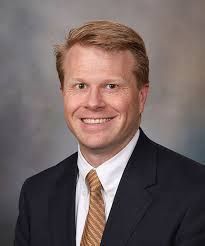How to Reduce Stress for Healthcare Workers During COVID-19 Crisis
Healthcare workers are facing anxiety from multiple fronts, including stress regarding whether their employer will help them should they contract the coronavirus.

Tait Shanafelt, MD
The coronavirus disease 2019 (COVID-19) outbreak has effective virtually every group of people in every nation across the globe, causing a significant amount of anxiety among healthcare professionals.
In a new essay, a trio of investigators—Tait Shanafelt, MD and Mickey Trockel, MD, PhD, both of Stanford University School of Medicine, and Jonathan Ripp, MD, MPH, of the Icahn School of Medicine at Mount Sinai—explained how addressing the anxiety and fear healthcare personnel are currently facing could help maximize care, despite the unusually high volume of patients requiring critical care.
While the pandemic has abruptly changed daily life for basically everyone, the strain on the healthcare system has led to a significant stress on healthcare workers and even if additional ventilators and intensive care unit (ICU) beds become available, it will not make a big impact if hospitals and healthcare facilities are short-staffed and physicians, nurses, and other healthcare personnel are over-worked.
The authors explained that an adequate workforce requires staffing in a number of areas, including physicians, nurses, advanced practice clinicians, pharmacists, respiratory therapists, and other clinicians. However, it also requires maximizing each professional’s ability to care for a high volume of patients.
The investigators said healthcare professionals face greater risks of exposure, more extreme workloads, more moral dilemmas, and a rapidly evolving practice environment that can differ from their normal work experience.
The needs can be derived simply asking and listening. Through 8 listening sessions with a total of 69 physicians, nurses, advanced practice clinicians, residents and fellows during the first week of the COVID-19 pandemic, the investigators explored 3 key concepts—what healthcare professionals are most concerned about, what messaging and behaviors they needed from their leaders, and what other tangible sources of support would be most helpful to them.
The conversations centered on 8 sources of anxiety, which included access to appropriate personal protective equipment (PPE), being exposed to the virus at work and potentially taking the infection home to their family, not having rapid access to testing if they development symptoms and concomitant fear of propagating infection at work, and the uncertainty that their organization will support and take of their personal and family needs if they develop the infection.
Other sources of anxiety included access to childcare during the increased work hours coupled with school closures, support for other personal and family needs as work hours and demands increase, being able to provide competent medical care if they are deployed to a new section, and a lack of access to up-to-date information and communication.
“Although these sources of anxiety may not affect everyone, they can weaken the confidence of health care professionals in themselves and the health care delivery system precisely when their ability to stay calm and reassure the public is most needed,” the authors wrote. “Recognizing the sources of anxiety allows health care leaders and organizations to develop targeted approaches to address these concerns and provide specific support to their health care workforce.”
Ultimately, the team found healthcare professionals want unambiguous assurances that their organization will support them and their family throughout the duration of the crisis, including by listening to their concerns and doing all things possible to protect and care for them from the virus both medically and socially.
Achieving these goals involve leadership being visible, such as hospital executives, nursing leaders, department chairs, and division chairs. These leaders would need to consider innovative ways to be present and connect with their teams given the necessity to continue social distancing.
“Health care professionals indicate they appreciate leaders visiting hospital units that are caring for patients with COVID-19 regularly to provide reassurance,” the authors wrote. “They do not expect leaders to have all the answers, but need to know that capable people are deployed and working to rapidly address the issues.”
The essay, “Understanding and Addressing Sources of Anxiety Among Health Care Professionals During the COVID-19 Pandemic,” was published online in JAMA.